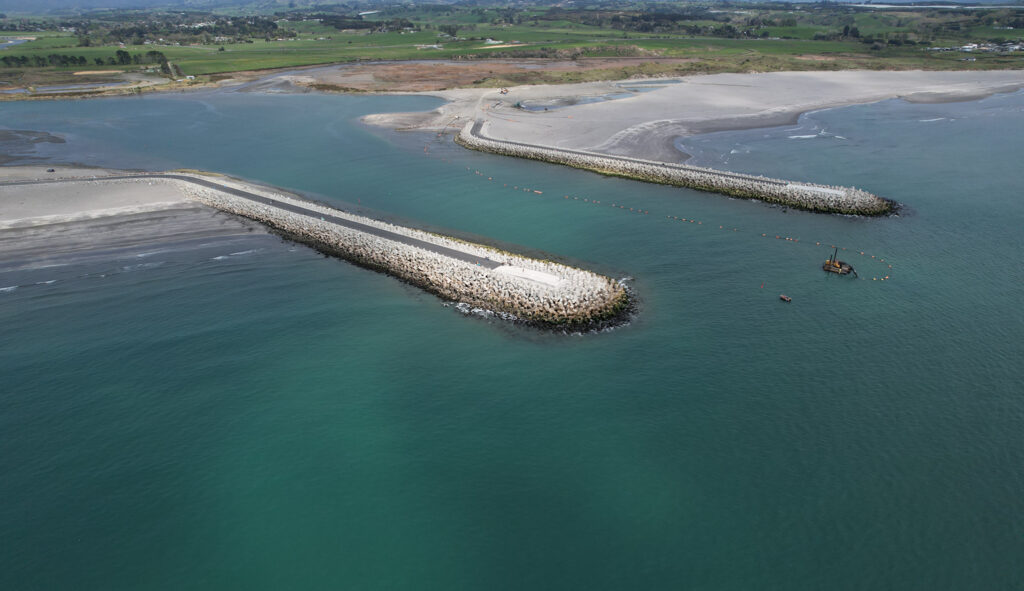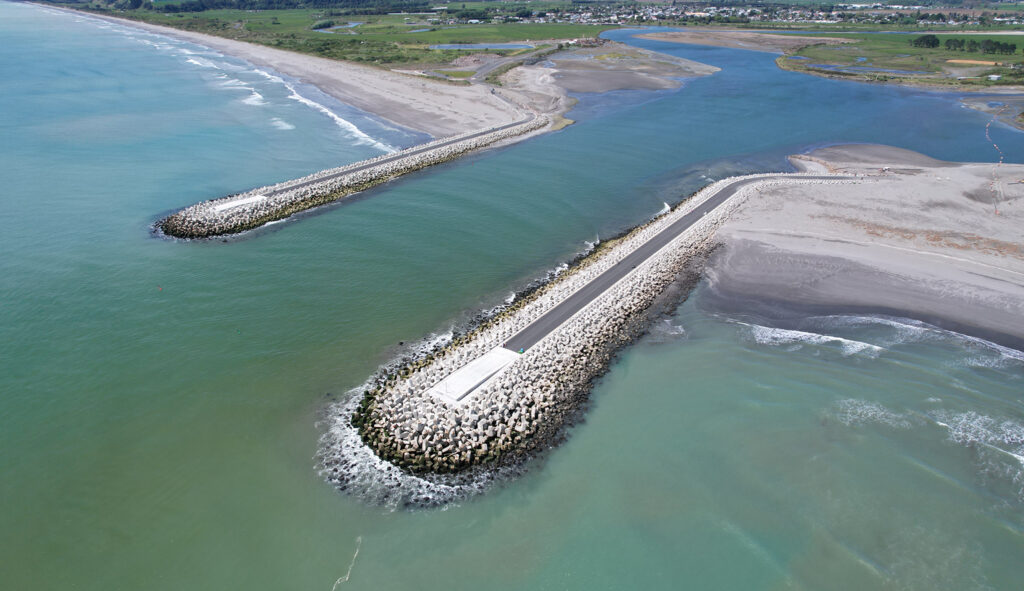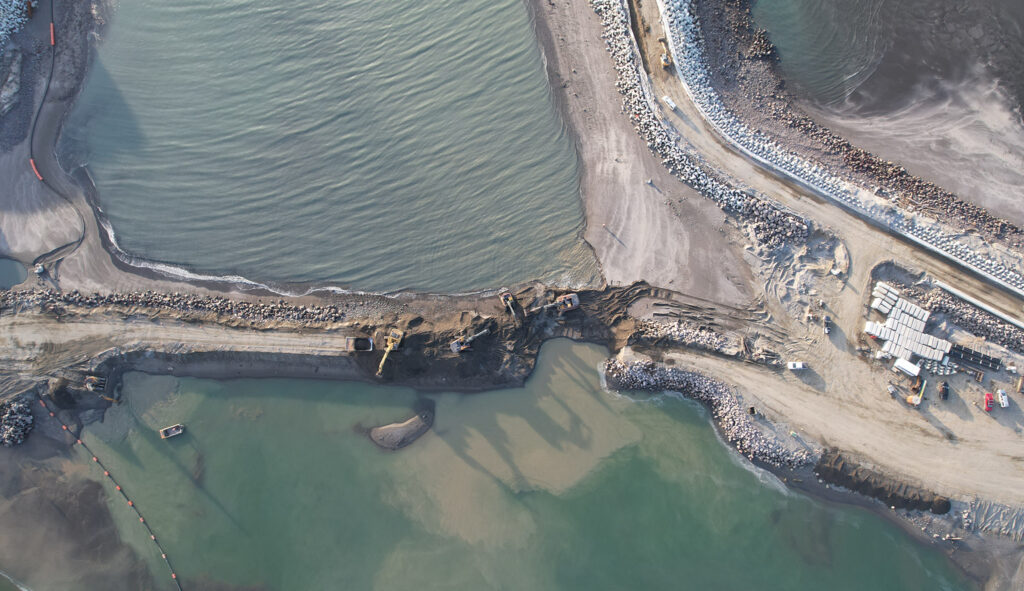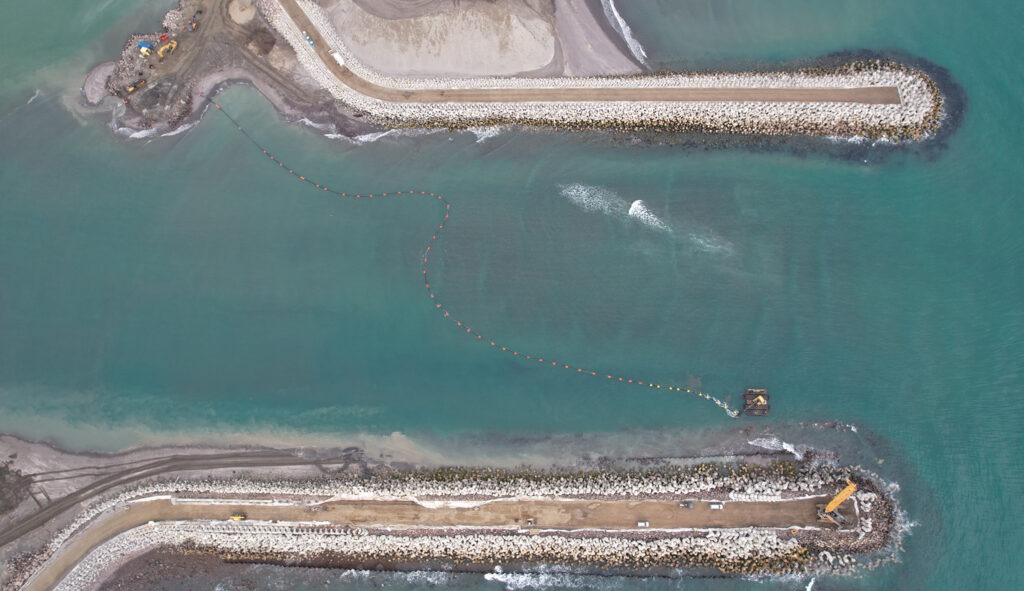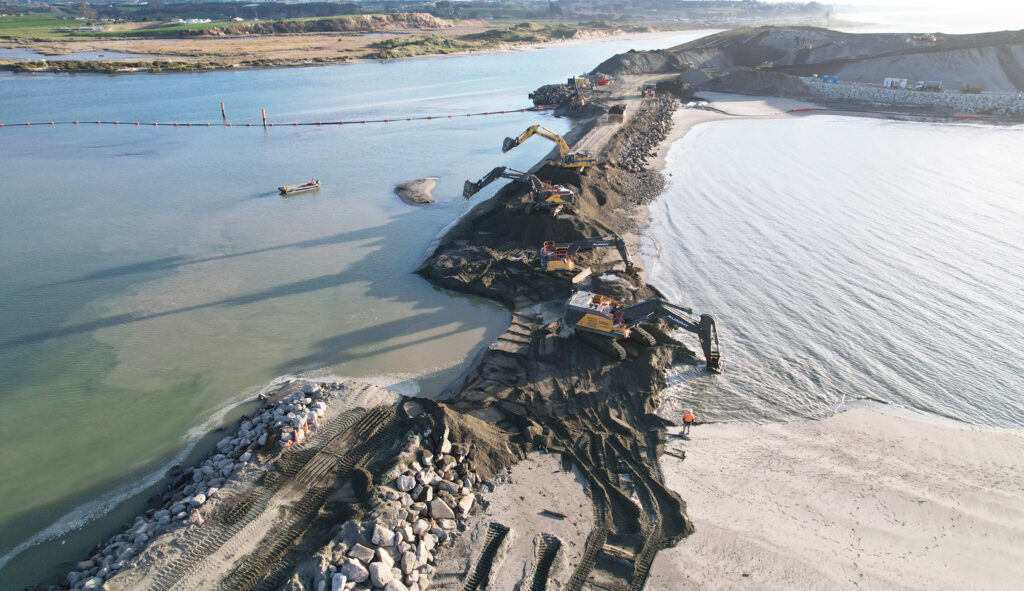Ōpōtiki Harbour
Creating safer harbour access to support Bay of Plenty aquaculture.
Ōpōtiki and the wider Bay of Plenty are growing rapidly. With demand for fresh kaimoana (seafood) increasing, and a new offshore mussel factory, Ōpōtiki is expected to become home to the largest aquaculture industry in New Zealand – putting pressure on the council to create safer, more resilient access to Ōpōtiki harbour for businesses and locals.
A request for submissions of interest was made for a new harbour redevelopment, looking for designs which would improve safety, stimulate the local economy and create jobs for locals. HEB won the contract, and broke ground in 2020.
The plan was to move the entire harbour entrance to the east and make it easier to navigate for much larger boats, in all but the worst sea conditions. The project involved dredging a new channel east of the old harbour entrance, and constructing two 450-metre seawalls – the first breakwater harbour entrance built in New Zealand in over a century. The previous entrance was then closed and filled with dredged material from the new channel.
Our Work
- Dredging of the new harbour access channel.
- Construction of two 450-metre seawalls.
- Closing the previous harbour access using dredged material from the new channel.
- Commitment to maintain the harbour for 10 years.
Sustainable Outcomes
This was a community-first project, with important community outcomes.
During the project, HEB created numerous jobs for local people, including training 30 individuals to support the development of the new seawalls, in collaboration with the Ministry of Social Development. In fact, approximately half of the project team was made up of Ōpōtiki locals, many of whom were involved since the project began.
The project also improved local business outcomes. This included enabling a local concreting business to substantially scale up its enterprise, meaning it is now able to deliver jobs and training to other locals.
The previous harbour entrance was closed using dredged material from creating the new entrance. This substantially reduced the amount of new construction material required, and saved emissions by reducing the transport required.
Client
MBIE, Ōpōtiki District Council
Location
Ōpōtiki
Completion
2024
